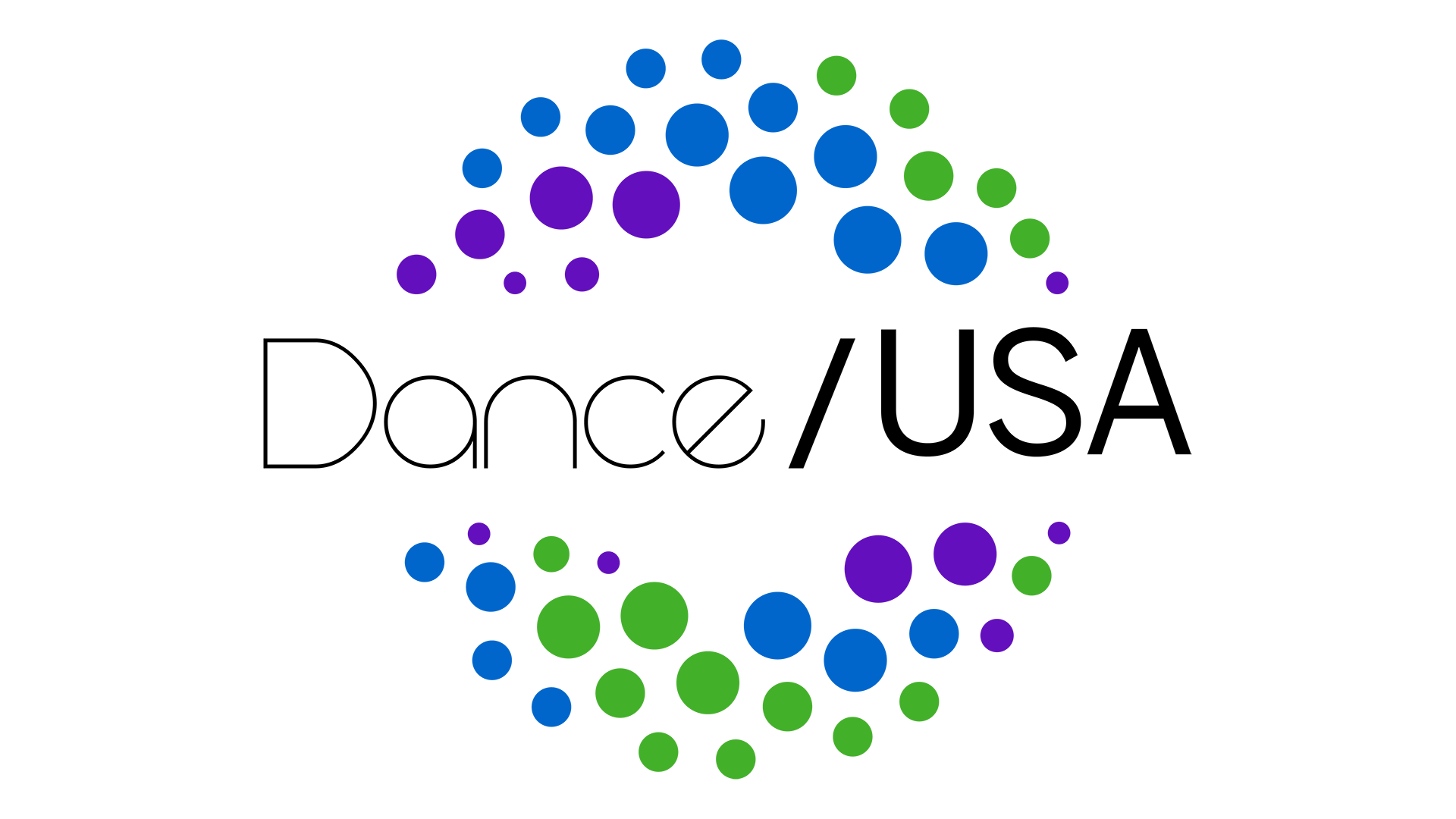By Catherine A. Hollingsworth
During the Dance/USA 2015 conference held in Miami from June 17-20, race and diversity were hot topics featured in multiple breakout sessions. Designed as freeform discussions between panelists and audience members, the Dance/USA breakout sessions provided an excellent forum for the sometimes personal and emotional experiences surrounding the topic of race in the dance
world. Two consecutive sessions, collectively titled “Race and Dance Townhall: REAL TALK,” were held Thursday, June 18.
Occurring on a backdrop of the racially motivated shootings just the day before in a Charleston, S.C., church, the environment for the “REAL TALK” sessions was charged. Yet moderator Michelle Ramos-Burkhart, former director of Dance/NYC and a non-profit arts consultant, emphasized that panelists and audience members alike were encouraged to speak honestly and openly, in order to effectively “discuss, and hopefully instigate, changes, which are sorely needed.” Panelist Theresa Ruth Howard, writer, teacher and former Dance Theatre of Harlem dancer, backed up the imperative for authentic exchange. “We commit in this space together to stay open,” she said. “Be honest but let it land.” As many of the panelists remarked, the diverse make-up of the attendees reflected a broad willingness to engage in a potentially sensitive but necessary conversation about race.
The first session, “Sifting Through the Soundbytes,” focused on what it means to be a person of color in the ballet world. Panelist Howard’s blog post, “The Misty-rious Case of the Vanishing Ballerinas of Color: Where Have All the Others Gone?” served as a centerpiece for discussion and debate. Attendees were encouraged to read the article in advance of the session.
In her article, Howard discusses the phenomenon of Misty Copeland, the highly visible and well-promoted African-American ballet dancer and newly named principal for the American Ballet Theatre in New York. While celebrating Copeland’s talent and rise to fame, Howard also critiqued the “mytholigization of Misty,” which in many news and feature stories implies that she is maybe the first, or only African American to achieve such prominent success. The danger of this myth, Howard warns, is that the history of the many successful black ballerinas who came before her
is essentially erased leaving the general population with a sense that Copeland is the only African-American ever to rise to the top in the ballet world.
Howard tearfully described her motivation for writing the article. She felt that the history of black ballerinas “was being eradicated.” She asked, “Why is it that the African-American story is so marginalized that you have to look so hard for it?” She raised thoughtful questions about the process of recording history, systemic race problems in the United States, and forms of institutional racism generated and sustained by myths like that of the “one and only” black ballerina.
Panelist Tanya Wideman-Davis, co-artistic director of Wideman/Davis Dance and an assistant professor at University of South Carolina, responded to Howard’s blog post. She noted three important points: othering, erasure, and myth. In reference to the question of history-keeping, Wideman-Davis looked beyond a white-black divide, asking: “What are we as black people doing to write about our own history?”
Wideman-Davis also explained her understanding of the “othering” that occurs regularly in the dance field, specifically how black versus white dancers’ bodies are described by viewers and critics.
She argued that white dancers’ bodies are “valued and normalized” while black bodies are “abnormal and deviant.” She continued, “Historically, our black female bodies were in service; we were not allowed to be ethereal.” Moderator Ramos-Burkhart added that black bodies are often described as “athletic” or “strong.” Both noted the power of language in generating divisive racial stereotypes, a theme that carried throughout the entire series of Race and Dance sessions.
Racism, whether in self-perception, social exchange, or professional limitation, was a painful and common personal experience for the panelists and many of the audience members. Howard described her childhood in the ballet studio as “knowing you’re kinda not supposed to be there,” and shared the daily experience of “carrying the history of your race on your back.” Wideman-Davis agreed, explaining, “Every dance job I’ve had in a ballet company, I felt like my body was being disciplined to fit within what the white gaze was seeing as valuable.” This concept of the gaze surfaced repeatedly, particularly in reference to artistic directors’ tendencies to select largely white dancers on the basis of what is frequently explained as an “aesthetic choice.”
The third panelist, Kaisha S. Johnson, co-founder and founding director of Women of Color in the Arts (WOCA), a national service organization, criticized the “so-called diversity in dance.” She asked: “Has that been achieved once you have one, you have two, you have three [darker-skinned] dancers? How about considering equity in the field?” Field-wide, she noted a lack of diversity in management, funding and presenting organizations, on boards of directors, and other behind-the-scenes positions.
The remainder of this first session was open for comments from the members of the audience. Some offered optimistic interpretations of current trends in the arts. Others expressed sadness for continued discrimination, fear and pain created and perpetuated by racism. Still others were more resistant to “the narrative of a naturally progressive society.”
The panelists, and those of African-American background who spoke from the audience, generally affirmed that young black dancers are typically discouraged from continuing ballet training to the advance pre-professional level, whether because of preconceived notions within their own community that “ballet is for white people” or through guidance from well-meaning teachers who redirect them to modern dance, where race is less of an issue. And for those who do continue to follow their passion for ballet, many described a limit to what can be accomplished in the field for a person of color, causing what former Alvin Ailey director Judith Jameson called the “disappointment gap.” As one audience member said, “It’s very stressful being a black person in America …. I don’t think white people understand the everyday stress.”
During the open discussion, additional issues surfaced, including the power dynamics in the field of dance, and inequality in the distribution of funds to performance groups and educational organizations. One attendee said, “Let’s talk about money because we’re talking about accessibility and opportunity. It comes down to our funders, our grantors, our organizations, that give $10,000 to the black companies but give millions of dollars to the white companies.”
The question of leadership and funding segued into the second panel. The new topic, “Diversity or Diversion?” led to a discussion on the distribution of grants in the performing arts. All of the previous panelists – Howard, Wideman-Davis, and Johnson – remained to continue the conversation and they were joined by MK Wegmann, president and CEO of the National Performance Network (NPN), and Stephanie McKee, artistic director of Junebug Productions. A large number of new audience members joined this second session on race and diversity, underscoring the relevance of this topic to the professional dance community at large.
Reiterating the goals of the two-panel series as a whole, moderator Ramos-Burkhart asked everyone to “look at the 30,000 foot view of our society… I ask that we keep our pulse on this larger picture.” She again emphasized, “I would love for this conversation to be very authentic and real. We can drop the politically correct language.”
For the focus of “REAL TALK, Part II,” Ramos-Burkhart foregrounded the current trend in diversity initiatives, and what she called “the D-word.” She provided some telling statistics: less than 2 percent of the arts organizations in the United States have a budget of more than $5 million dollars, but these organizations receive more than 50 percent of all the arts funding given away annually. She questioned not only the amount of funding and who receives it, but also what purpose those funds serve for the communities meant to benefit. She asked, “Are our funders being nuanced and strategic when they’re giving money to a diversity initiative?”
Ramos-Burkhart also pointed toward successful diversity-focused arts funding programs, including the National Performance Network and Dance/USA’s Engaging Dance Audiences. Members of both these initiatives were present in the room and spoke about their experiences in shifting the tide toward more racially equitable funding models.
Howard, Wideman-Davis and Johnson, all from the previous session, were invited to speak first on the panel’s focus topic. Johnson started the conversation strongly. “We just celebrated the 50-year anniversary of the Civil Rights Act. Do we need a Civil Rights Act of funding to help equalize the playing field in the performing arts?” Wideman-Davis then brought forward some problematic strategies often used to satisfy diversity requirements, including bundling of groups of artists, the funding of ideas versus finished projects, and what she called “one-off funding [of black organizations] as charity work, versus what is given to white artists” on an ongoing basis. Johnson added, “It’s not just about the stage, it’s about teaching, going into communities” and shifting the landscape from the foundational level. Howard added, “I’m more interested in what programs get funded for diversity and what’s the quality and sustainability of those initiatives.”
Seeking the flaws in the system, Junebug Production’s McKee spoke about the dance field from her perspective as an educator and artistic director. She pointed toward problematic language and disempowering organizational models typically used in grant writing and funding. Diversity programs, she noted, tend to follow a social service model, employing biased language like “at-risk,” “underserved,” or “underrepresented,” ultimately sustaining institutionalized racism. She criticized such programs as a source of “cheap grace” for organizations or funders who set themselves up to feel good for doing community service that ultimately has minimal effect.
To counter systemic ills, many speakers from the panels and the audience argued for increased awareness of the multiple forms racism can take in society. Wegmann described racism at three levels: the individual and institutional levels, plus what she called “structural racism,” meaning cumulative racism from multiple organizations that normalize and solidify racist processes and tendencies.
Wegmann explained how NPN, a national network of about seventy organizations, offers a support structure for about 70 small to mid-size, community-based organizations of color, and/or geographically isolated organizations. She reflected that these types of organizations often struggle to stay afloat due to insufficient funding, a challenge ultimately rooted in the multi-layered racist tendencies she described.
As one solution, she presented NPN’s partner initiative: Leveraging a Network for Equity (LANE). LANE’s concrete methodology for building a solid financial foundation includes organizational diagnostics, financial education and planning, and risk and recovery capital. With support from the Andrew W. Mellon Foundation, LANE takes an active approach to what Wegmann called “racial justice.” Further, she criticized the 501(c)3 nonprofit model usually employed by arts organizations of all sizes, stating that the 501(c)3 structure “puts us in supplicant positions to people who know nothing about our business.”
Dance/USA’s Engaging Dance Audiences (EDA) selection process was held up as another proactive model to establish greater diversity in the field. As explained by those present who had served on the EDA panel, an overt effort was made to engage specific audiences, including people of color, the LGBT community, and people with disabilities. Suzanne Callahan, the EDA project manager, also noted that the panel was made up of people representing these populations. And, as EDA panelist Baraka Sele stated, “We stuck to a rigorous process, and rather than looking at who the organization is, we said, ‘Let’s evaluate them unequivocally by the criteria.’” Thus the “usual suspects” would not receive funding by default. In this way, genuinely diverse applicants were chosen to receive funding for EDA’s third round.
As the conversation continued, current models of business and funding, as well as the vocabulary used to describe diversity programs, were further critiqued. And many agreed that change could be found in the development of new structures, new sources and criteria for funding, and a renewed consideration of what diversity actually means.
In closing, moderator Ramos-Burkhart encouraged all present to continue asking difficult questions about race and discrimination in the arts. “The great news of the afternoon,” Ramos-Burkhart said, “is this conversation isn’t over.”
Catherine A. Hollingsworth is a freelance dance journalist based in Miami. After graduating from Brown University with a BA in Visual Art, she relocated to New York where she pursued creative work in both the dance and visual art fields. She relocated to Miami in 2007, and began writing in 2010 after winning the Writer’s Prize from Artlurker.com, a Miami-based contemporary art blog. Currently she is covering dance and hybrid performance for local and national publications with a focus on the local dance community. Her writing has been published in Art Papers, ArtburstMiami.com and Miami New Times.
____
We accept submissions on topics relevant to the field: advocacy, artistic issues, arts policy, community building, development, employment, engagement, touring, and other topics that deal with the business of dance. We cannot publish criticism, single-company season announcements, and single-company or single artist profiles. Additionally, we welcome feedback on articles. If you have a topic that you would like to see addressed or feedback, please contact communications@danceusa.org.
Disclaimer: Opinions expressed in guest posts do not necessarily represent the viewpoints of Dance/USA.


